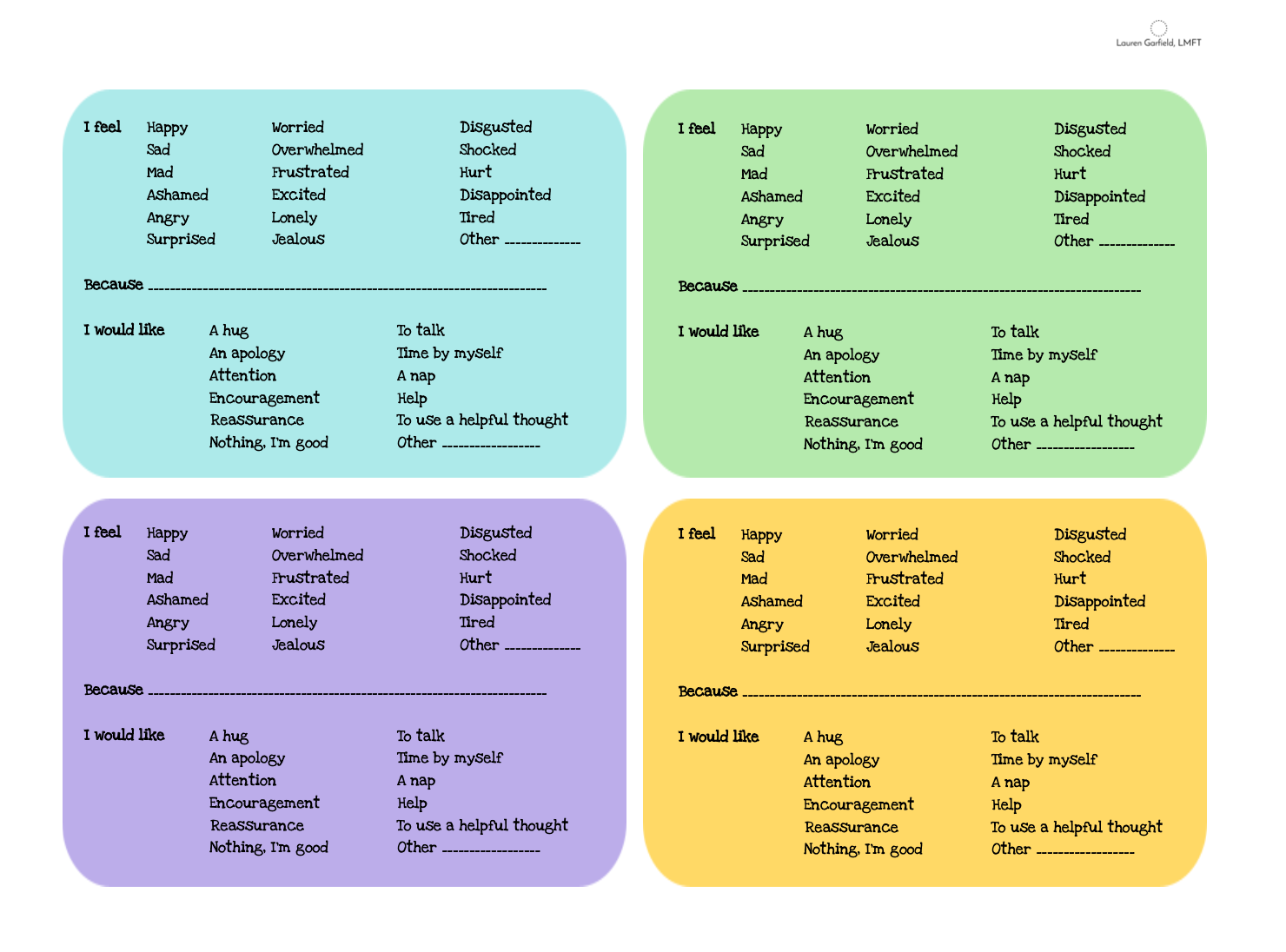When Emotions are High, Words are Hard
On a rainy evening, I was ending to an energetic toddler and cooking dinner while Cocomelon droned in the background, the dog was barking at an invisible intruder outside, and my phone was blowing up with texts. It was too much. I felt like the inside of my body wanted to explode out of the skin that kept it all in place. I handed the toddler to my husband, turned off the stove, and disappeared into the corner of the laundry room with the lights off, hyperventilating. I couldn’t tell anyone what was wrong: seemingly everything was fine— dinner was going to be done soon, the toddler was being a toddler, the dog was just being a dog, and Cocomelon was, well, Cocomelon. Nothing was WRONG.
When we’re overwhelmed— with stressors, sensory input, responsibilities, thoughts, feelings, sensations in our bodies— it can be really hard to actually say what’s wrong and ask for what we need. This is hard for adults, with our brains twisting and rearranging every thought at a mile a minute. It’s particularly difficult for kids, who have limited emotional vocabulary and experience.
Somewhere along your path, you’ve probably encountered “I Feel” statements. These statements are a pretty standard formula (usually something like: I feel____ when _____ because ____) to express feelings. They show up in couples counseling, school curriculum for social/emotional development, even some corporate communication seminars. They help people to express emotions without having to think too much, help people take responsibility for their emotions, and decrease defensiveness.
When I was a therapist-in-training, I would send kids home with the “I Feel” statement formula and instructions to use it when they were upset. Kid after kid would practice in session, and enthusiastically commit to using the technique at home. Then they’d come back the next session and say they forgot to try to use it. Their parents would tell me their kids wouldn’t try because they were too dysregulated.
When we ask our kids (and ourselves) to try a new way of communicating or regulating, we’re also asking them to try a new way of being in relationship with themselves and others, and that can be daunting.
It’s hard to try something new, y’all. From a family systems perspective, we keep doing the same ol’ stuff because it feels safe and comfortable, and it keeps things as-is. Change is scary for everyone. When we ask our kids (and ourselves) to try a new way of communicating or regulating, we’re also asking them to try a new way of being in relationship with themselves and others, and that can be daunting. To make this as easy as possible, I made a worksheet where kids can more simply circle emotions (helps with vocabulary! easier to do when upset!) and what might help in that situation (it’s hard to think of ideas when you can’t think straight!). I encourage you to try it out when things are going well (“I feel happy when we spend time together, I would like a hug”), practice what cartoon characters would say (Bluey might say, “I feel sad when the house is for sale, I would like to talk”), and practice using it as a parent to express feelings to your child. The idea is to make it so easy and normal and regular to use these statements, that it doesn’t feel so hard to make this big change when the big feelings are present.
Click below to download the file (for free! with no need to enter an email address or sign up for anything!):
Incidentally, if you like this one, I have a bunch of worksheets up on on Etsy.


